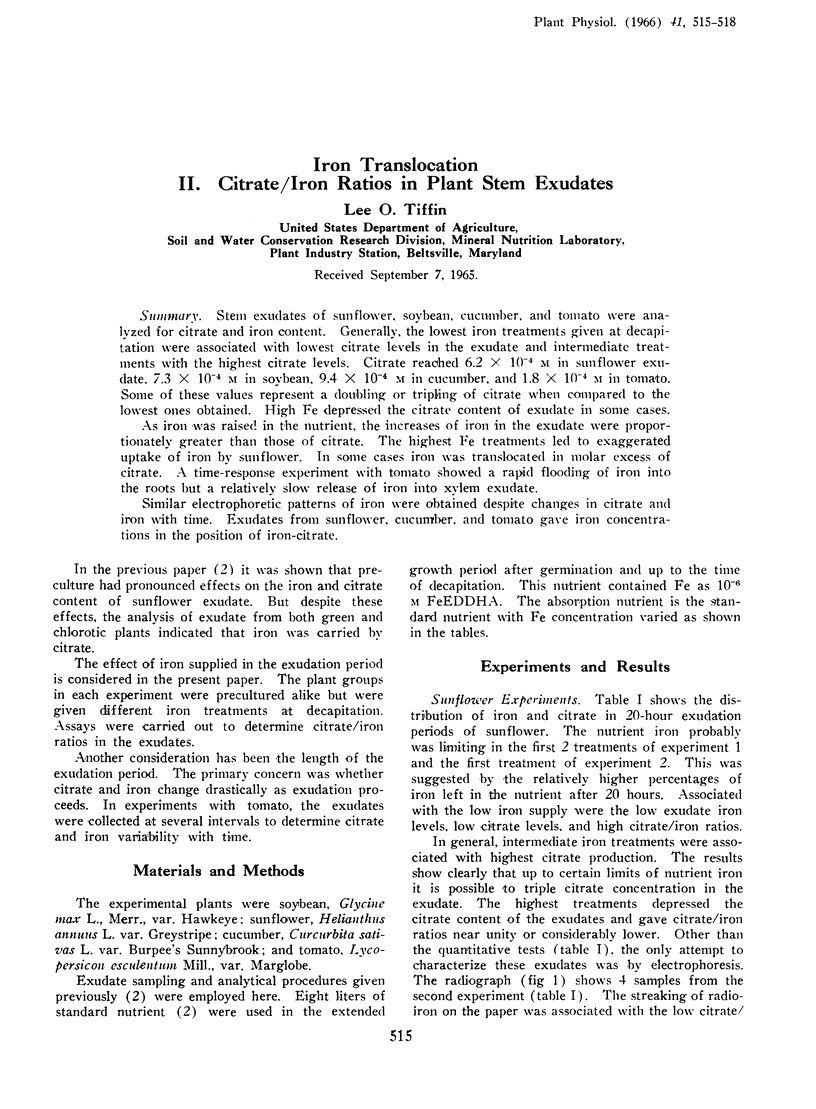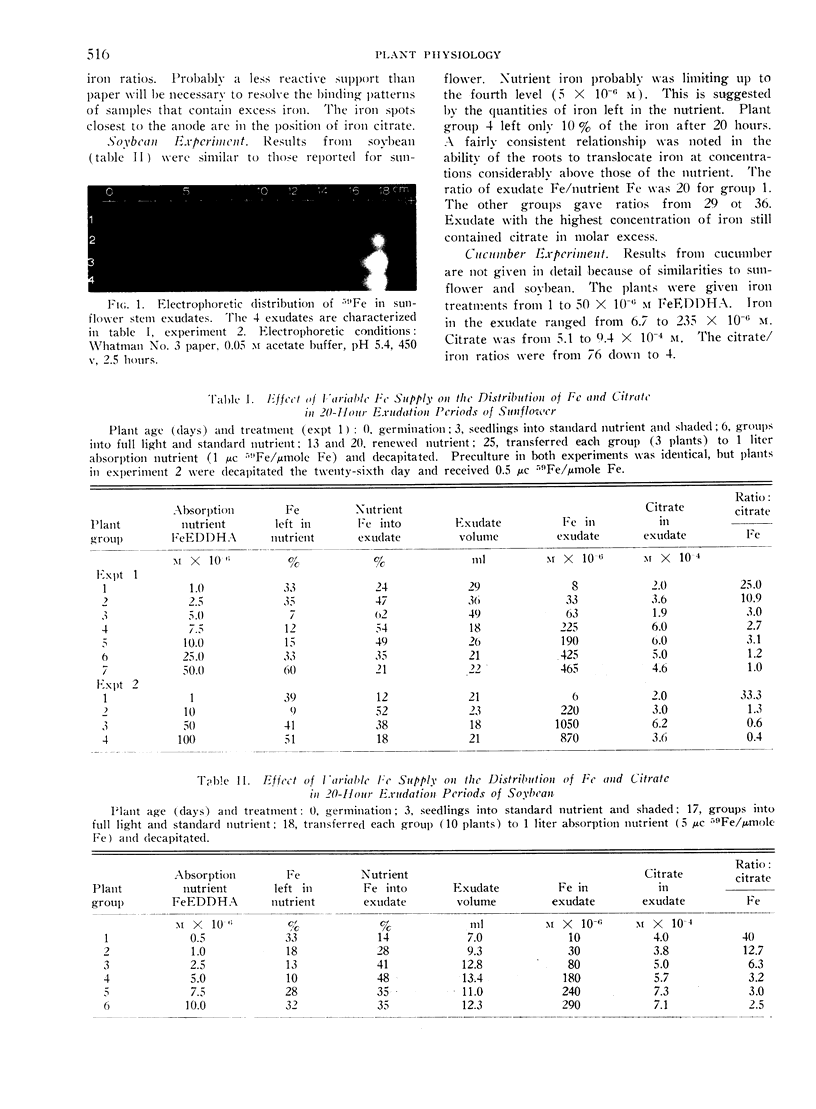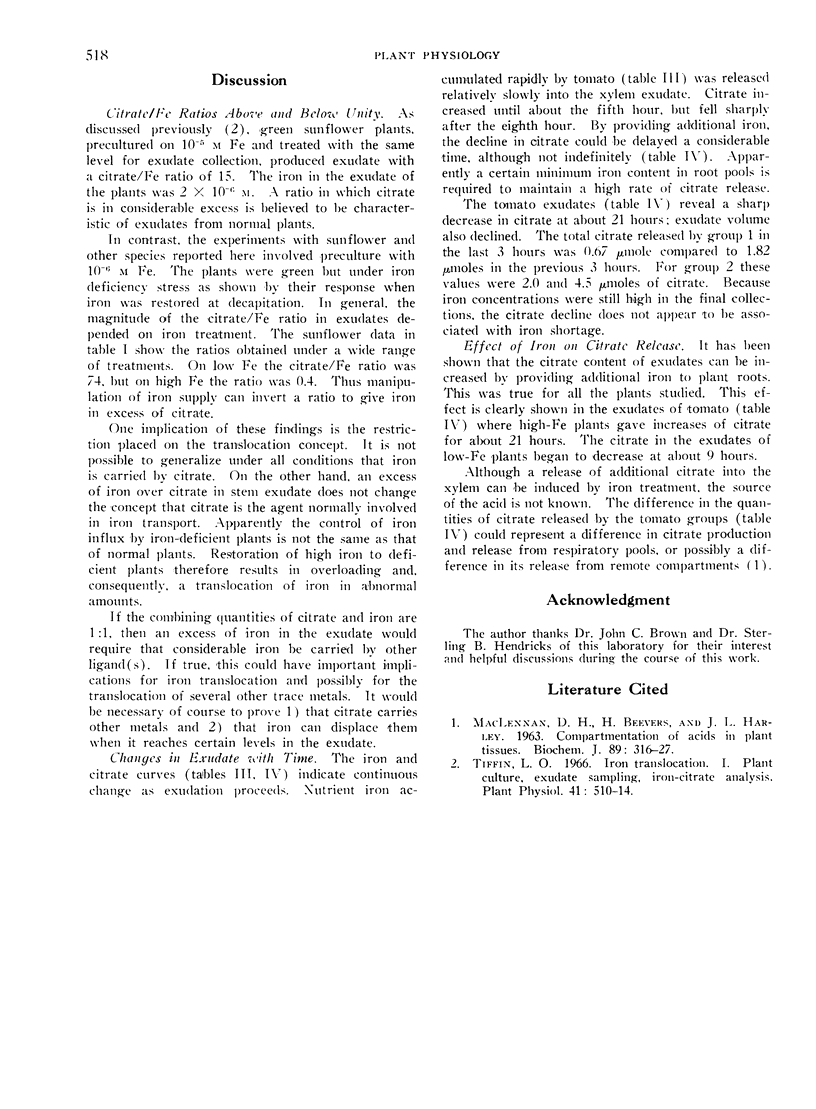Abstract
Stem exudates of sunflower, soybean, cucumber, and tomato were analyzed for citrate and iron content. Generally, the lowest iron treatments given at decapitation were associated with lowest citrate levels in the exudate and intermediate treatments with the highest citrate levels. Citrate reached 6.2 × 10−4 m in sunflower exudate. 7.3 × 10−4 m in soybean, 9.4 × 10−4 m in cucumber, and 1.8 × 10−4 m in tomato. Some of these values represent a doubling or tripling of citrate when compared to the lowest ones obtained. High Fe depressed the citrate content of exudate in some cases.
As iron was raised in the nutrient, the increases of iron in the exudate were proportionately greater than those of citrate. The highest Fe treatments led to exaggerated uptake of iron by sunflower. In some cases iron was translocated in molar excess of citrate. A time-response experiment with tomato showed a rapid flooding of iron into the roots but a relatively slow release of iron into xylem exudate.
Similar electrophoretic patterns of iron were obtained despite changes in citrate and iron with time. Exudates from sunflower, cucumber, and tomato gave iron concentrations in the position of iron-citrate.
Full text
PDF



Images in this article
Selected References
These references are in PubMed. This may not be the complete list of references from this article.
- Tiffin L. O. Iron translocation I. Plant culture, exudate sampling, iron-citrate analysis. Plant Physiol. 1966 Mar;41(3):510–514. doi: 10.1104/pp.41.3.510. [DOI] [PMC free article] [PubMed] [Google Scholar]



